Highest level instructors consider stances as the most important element of kihon. A stance is very much like the foundation of a house, quick to crumble if it is weak. Stances were designed to lower one's center of gravity and thus improve stability. Without a solid stance, an individual cannot deliver a technique with maximum power, and one can easily be taken off balance. Shōtōkan stances usually tend to be longer and deeper than other styles of Karate. Tachi* can be divided into 4 categories:
1.Outer Tension Stances
Outer tension stances involve a slight outward pressure of the knees and thighs. They require deep bending of the knees and therefore have the lowest center of gravity. Since these stances are very low, practice of them is very exhaustive on the leg muscles, thus making it an ideal training for these muscles. Outer tension stances are usually used in conjunction with large movements or long and medium range combat techniques. "Hard styles" of Karate (like Shōtōkan) tend to practice these stances a great deal more than the other stances.
| Japanese | English |
|---|---|
| zenkutsu-dachi | front stance |
| kokutsu-dachi | back stance |
| kiba-dachi | horse stance (horse-riding stance) |
| fudo-dachi | immovable stance |
| shiko-dachi | square stance |
2.Inner Tension Stances
Inner tension stances require an inward pressure of the knees and thighs, and have a higher center of gravity. Although easier on the legs, the positions of the feet and knees can be quite awkward, hence these stances are usually more difficult to master. Since the focus of these stances is inward, they are ideal for developing ki, one's inner energy. "Soft style" practitioners tend to train these stances more often. Inner tension stances are considered as more advanced stances and are usually practiced in combination with smaller techniques that can be used in short range or close combat.
| Japanese | English |
|---|---|
| hangetsu-dachi | half-moon stance |
| sanchin-dachi | hourglass stance (3 wars stance) |
| nekoashi-dachi | cat stance (cat-leg stance) |
3.Natural Stances
Natural stances, or shizen tai (natural body), include all of the stances performed from fairly natural positions. These stances maintain the body's center of gravity at its normal level, requiring little or no tension in the legs or bending of the knees. As such, they are very quickly and easily learned. Natural stances are used when bowing, resting, retreating, and joint locking. They are also often used when awaiting an attack since an individual is most likely going to be in some form of a natural position if ever attacked for real.
| Japanese | English |
|---|---|
| hachiji-dachi | stance (shape of 8 stance) |
| uchi-hachiji-dachi | inward natural stance |
| musubi-dachi | attention stance (united stance) |
| heisoku-dachi | feet together stance (closed feet stance) |
| renoji-dachi | L-stance (shape of re stance) |
| heiko-dachi | parallel stance |
4.Unstable Stances
Unstable stances include stances that leave the individual in a precarious position, actually worsening balance. They are usually performed either on one leg or with both feet very close together. These stances have very specific functions related to bunkai (applications training) and are not designed to be maintained for long periods of time. However, since these stances are unstable, they require a great deal of balance and are often practiced to help individuals to improve overall stability and coordination.
*Please note that in a compound word, where tachi does not come first, its pronunciation and writing change slightly, becoming dachi.
| Japanese | English |
|---|---|
| ashi dachi | leg stance |
| tsuru-dachi (sagiashi-dachi) | crane stance (crane-leg stance) |
| kosa-dachi | cross stance |
| hizakutsu-dachi | knee bending stance |
| hiza-dachi | one knee stance |
*Please note that in a compound word, where tachi does not come first, its pronunciation and writing change slightly, becoming dachi.
Great view but also a good representation of how a stance should be solid as the "rock", while your body movement remains fluid as "water". Cathedral Rocks, Kiama Downs NSW 2533
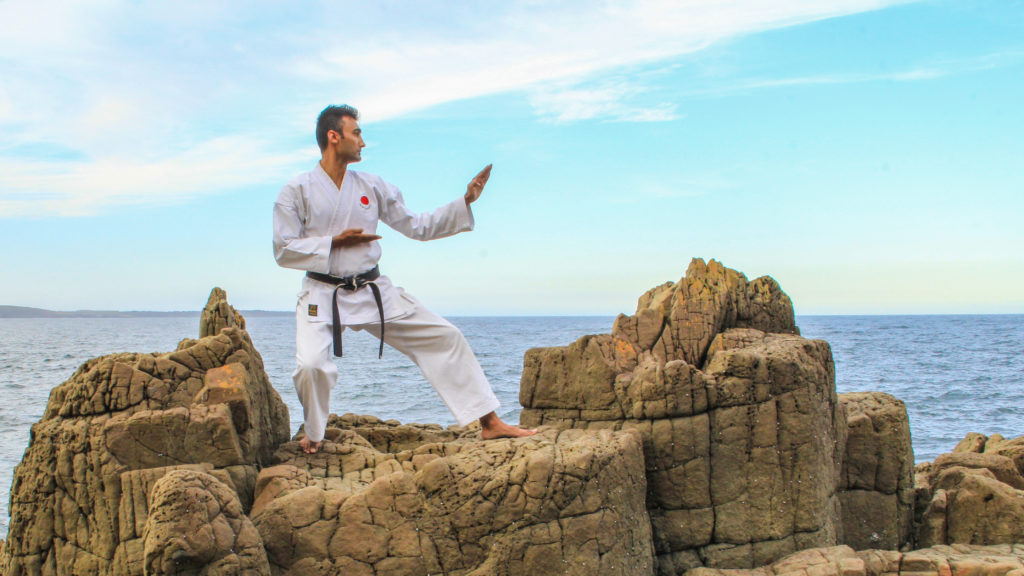
Kōkutsu-dachi ( 後屈立, Back stance)
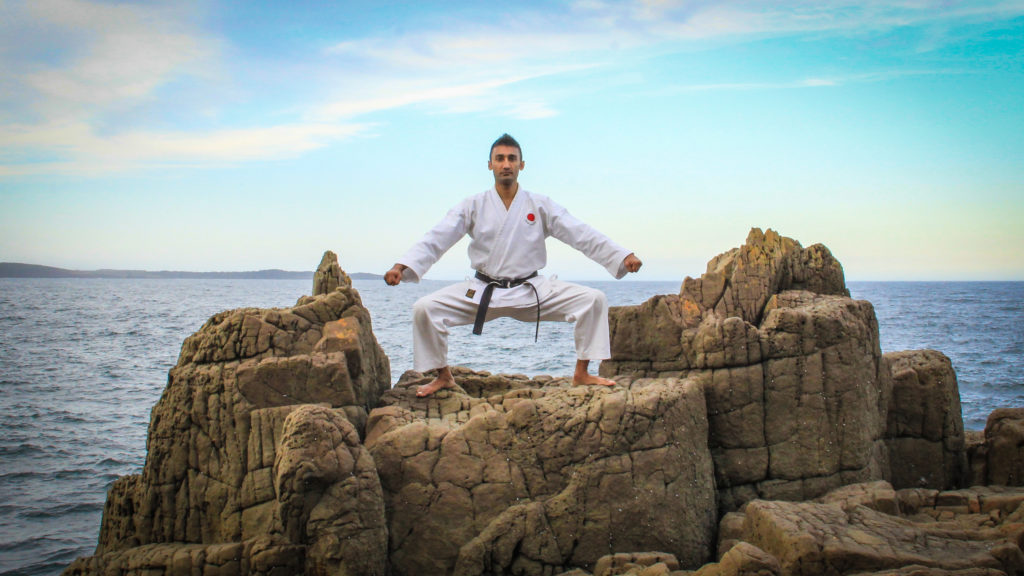
Shikō-dachi ( 四股立, Horse stance)
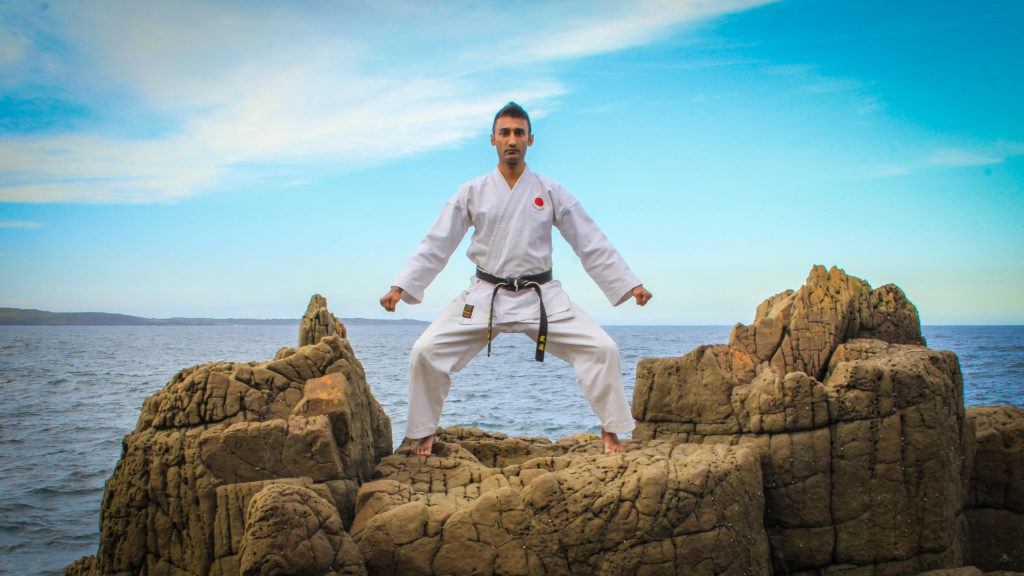
Kiba-dachi ( 騎馬立, Horse Riding stance)
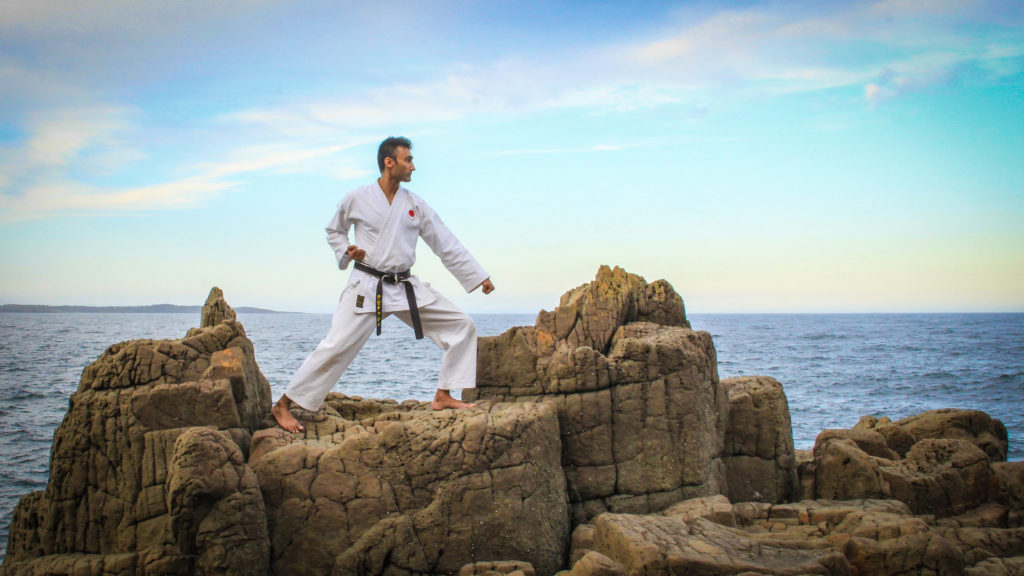
Zenkutsu-dachi (前屈立, Front stance)
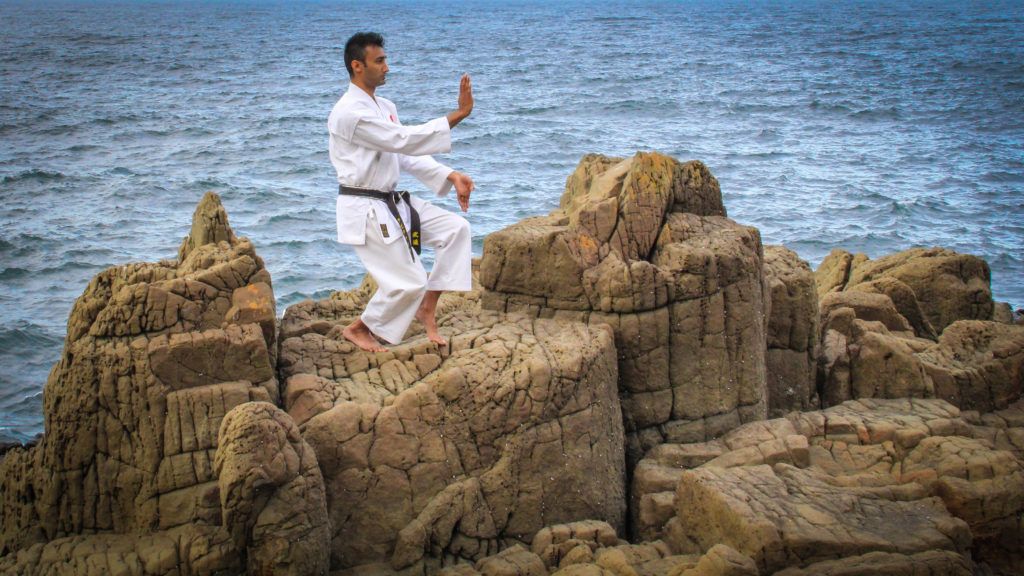
Nekoashi-dachi ( 猫足立, Cat stance)





